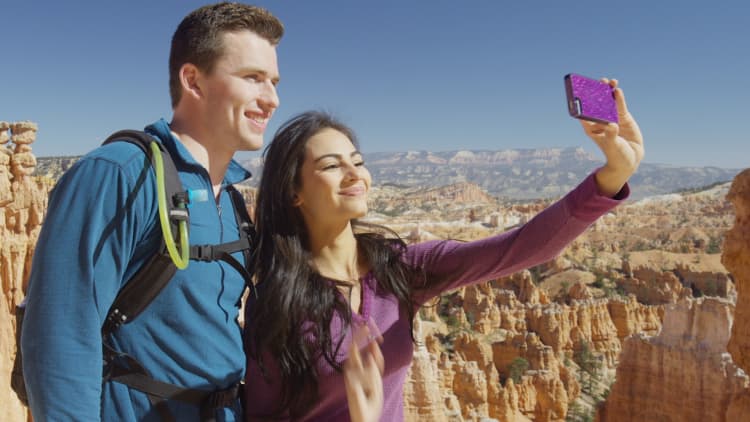Many millennials have integrated themselves into all levels of today's workforce from burger flipping to high finance. Others have taken a look at the mainstream options, said, "No, thanks," and hit the road.
But while the hippies and explorers of previous generations scraped by, today's beatniks are using their social media savvy to turn their lives into permanent paid vacations.
And there's real money at stake. As Rachel Monroe reports for The New Yorker in a piece called "#Vanlife," after the hashtag with over a million tagged posts on Instagram, "the social media influencer market was worth five hundred million dollars in 2015; the market is expected to increase to at least five billion dollars by 2020."
Participants in #vanlife culture make money by building followings on platforms like Instagram and then partnering with brands, companies and even TV shows to incorporate product placement into images that are otherwise earnest and wholesome.
As they see it, they're not selling out, they're just settling, and that's still preferable to settling down.
Monroe follows Emily King and Corey Smith, who live in a VW bus with their dog Penny, burning incense to obscure the smells of overcrowding and hunting for free WiFi. They surf, journal, cook, do yoga and document their boho lifestyle for the fans without whom they wouldn't be able to keep what they call "alliances" with companies like Hydro Flask water bottles, Kettle Brand potato chips, Clif Bars, Synergy Organic Clothing and Go Westy van parts.
Other paid partnerships, Monroe reports, have included the tourism board of Saskatchewan and the WGN show "Outsiders."
Although King and Smith's images look effortless, they are carefully curated, staged and timed, Monroe notes as she watches the process by which they're put together. One snapshot of King with a book takes half an hour. ("Lift your head up a little bit more, look like you're reading," coaches Smith.)
Last year, King and Smith made $18,000. They're already on track to do better in 2017. In January and February alone, Monroe writes, "they lined up ten thousand dollars' worth of endorsements." And what they're selling is an enviable combination of youth, beauty, health, mobility and a hint of rebellion — enough to intrigue audiences but not enough to scare advertisers away.
There are downsides to the business of packaging and selling yourself on the social media market. You live in a perpetual present, unable to save for or even really consider a future in which people won't want to look at you anymore. You contort yourself to please both your fans and your sponsors. And you expose yourself to scathing comments from the peanut gallery.
Monroe acknowledges the underlying uncomfortable truth of this:
There is an undeniable aesthetic and demographic conformity in the vanlife world. Nearly all of the most popular accounts belong to young, attractive, white, heterosexual couples. "There's the pretty van girl and the woodsy van guy," Smith said. "That's what people want to see." At times, the vanlife community seems full of millennials living out a leftover baby-boomer fantasy: the Volkswagens, the neo-hippie fashions, the retro gender dynamics.
Still, the appeal is undeniable. These millennials are succeeding because they're responding to a deep-seated desire in people, especially young people, to see the world, independent, free of the conventional constraints of family, mortgage and career — or to admire those who can.
As a comment on a different #vanlife Instagram posting puts it, "If only everyone had a van!"



